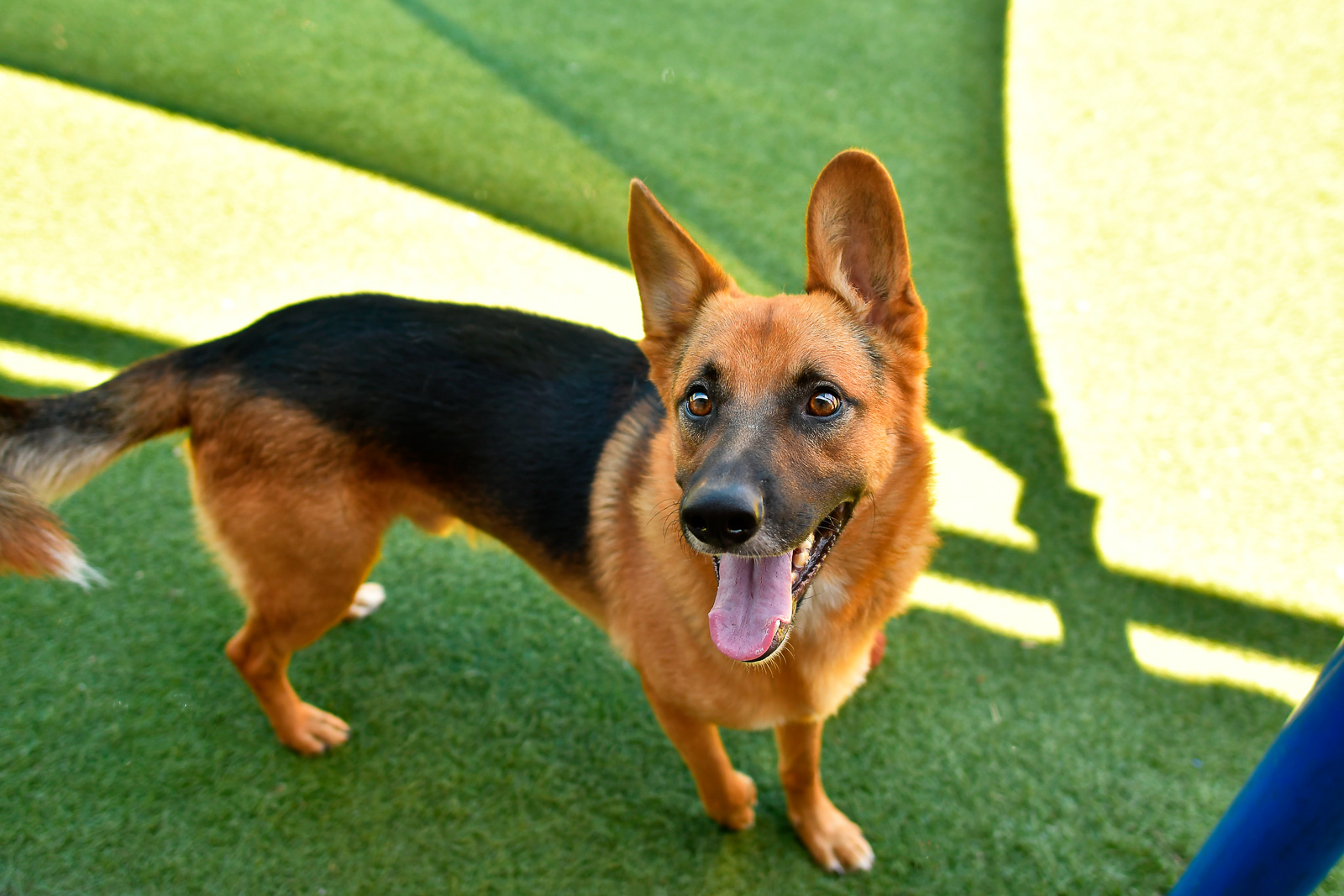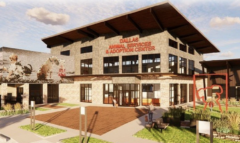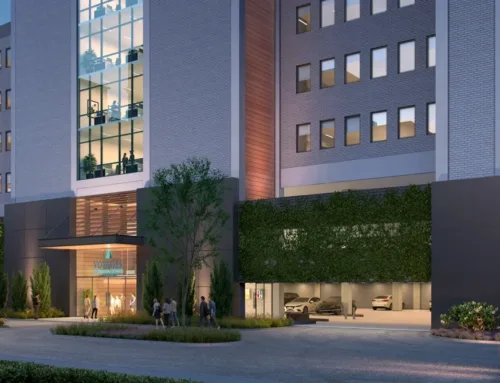
Photo courtesy of Dallas Animal Services.
Dallas animal activists are eyeing the 2024 bond program to fund a new animal shelter and adoption facility totaling $114 million.
In his November 2022 State of the City address, Dallas Mayor Eric Johnson urged city leaders to focus on the “Three P’s” — public safety, potholes and parks — for the billion dollar bond program.

Photo courtesy of Dallas Animal Services.
To fit with those priorities, advocates plan to build the shelter on park land already owned by the city, and envision a space where residents “have lunch and hang out, throw the frisbee” all while engaging with a more public facing animal facility, said Elizabeth Schrupp, Animal Advisory Committee member for District 11.
Plans show a shelter with increased kennel capacity — a solution to the shelter’s struggles to keep up with the surging animal population — a spay and neuter clinic, outdoor areas and meet and greet rooms, as well as a welcome center and community education area.
Schrupp said the state of Dallas’s current shelter is “far behind” the standards of other shelters in North Texas.
The new shelter’s design was put together by Quorum Architects. The firm has designed shelters throughout Texas, including Grapevine, Kaufman County and North Richland Hills.
“Some of these are smaller cities, and they’re stepping up for the need in their area. And I think Dallas, we need to step up and help ours as well,” Schrupp said.
Schrupp said Dallas’s current facility, located off I-30 on Westmoreland Road, was originally built to house animals involved in cruelty investigations. While the shelter has adapted to the space in the last 17 years, the new facility would allow Dallas to “house our animals and take care of them” at a higher level.
The modern facility is double the size of the current shelter on Westmoreland Road, and would better meet the needs of animals and Dallas Animal Services. And, according to District 11 city council member Jaynie Schultz, it will be more aligned with current best-practices in animal treatment.
“Our understanding of the needs of animals is constantly evolving. If you think about the way that animals were seen even 10 to 15 years ago, when the shelter was built, it’s completely evolved,” said Schultz. “So it’s not as if Dallas has been neglecting something that’s needed. We have a relatively new shelter, but our understanding of animals and what they need has changed so much. And the demand, of course, the demand has changed.”
While demand for funds from the 2024 bond will be competitive, Schultz said she will be “pushing for the economic development aspect” of the new shelter as a reason to be included in the final package. Schultz said a “major expenditure” such as a state-0f-the-art adoption facility will likely have to come from a bond program.
An elevated adoption space surrounded by a community park will better the quality of life of residents who already live near the anticipated shelter site, and encourage more people to patronize or move into the neighborhood, she said.
“It makes sense for us to be building a new shelter now, before the old one becomes so cost prohibitive to maintain, not to mention the fact that it doesn’t meet the needs of our growing area,” Schultz said.
According to Amanda Atwell, spokesperson for Dallas Animal Services, outside donors are also being targeted to help lower the amount needed from the bond package. Donors will be necessary if only a portion of the requested $114 million is included in the bond, she said.
As an animal advocate who sees the state of the shelter on a daily basis, Atwell said plans for the new shelter are significantly more aligned with the needs of employees and volunteers at DAS.
The new shelter will have wings of kennels branching off of a central location, which would help quarantine dogs in the event of a contagious disease outbreak.
“The way the shelter is laid out, it would allow us to just shut down and isolate that wing instead of having to go into a complete split of the shelter like we had to recently with canine influenza,” Atwell said. “We had a canine influenza outbreak and we essentially were running two separate operations during that outbreak, which is very difficult. So it really will help with the spread of disease.”
Plans are also in the works for community education programs that would help “work at the root” of the overpopulation issue in the city of Dallas. Community areas in the new shelter will be able to host groups of students to learn about the proper treatment of animals and other education topics, Atwell said.
DAS and other advocates of the new shelter are working to gain community support for the proposal in hopes that it will make it into the final bond package.
“We’re just really encouraging people who care about animals and who support this to reach out to their city council members and say how they think it’s a need and how it’s worthwhile to spend the money on something like this,” Atwell said. “It’s really just going to benefit the animals in the city of Dallas, long term.”





